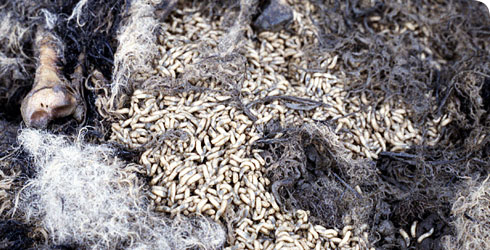Associations
The commonest parasitic diseases of blowflies are fungi of the genera:
- Empusa
- Entomophthora
These invade the body of the insect by penetrating the soft membrane along the sides of the abdomen and ultimately kill it. Attacks seem particularly common in autumn, especially in wet weather.
There are a number of parasitic wasps which will attack Calliphora vicina. The most important are:
- the chalcid Nasonia vitripennis - the larvae are external parasites of blowfly pupae within the puparium, and can cause high mortalities in blowfly populations.
- the braconid Alysia manducator - the larvae are internal parasites of the pupae.
Whiting (1967) gives a good review of the biology of Nasonia vitripennis. The biology of Alysia manducator has been described in detail by Evans (1933) and Salt (1932).
Predators
Blowflies have a wide range of natural predators.
The maggots are probably subjected to the heaviest predation. Their chosen food, carrion, is itself an attractive food source for many animals, and maggots occur in high concentrations on carcasses.
In the UK, their main predators are beetles, particularly species of the genera Carabus and Hister.
Vertebrate predators include:
- hedgehogs
- foxes
- birds such as crows and choughs
The adult flies form part of the diet of vertebrates such as:
- birds
- frogs
- toads
- lizards
They will doubtless fall prey to robberflies and spiders as well.
